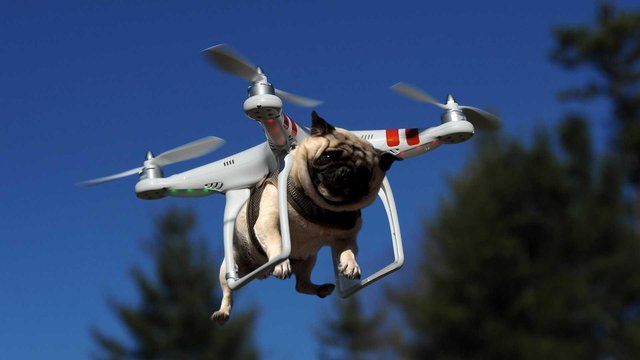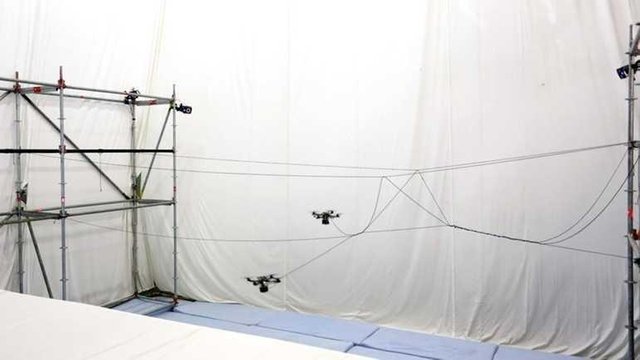Drone - the robot builds the future
There are drones for packet delivery, for search and rescue, to be heard, for photography and more. Now one more app for drone has come close to reality.
Researchers from the Swiss Federal Institute of Technology (ETH) Zurich point out that the flying robots are tuned and programmed, can build cable bridges between forests without human intervention, and bridges can support the burden of people walking through it.
According to the researchers, the aircraft offers a number of advantages over the machines traditionally used for building construction and other objects, as they can fly in and around existing facilities and access to places that are difficult for non-air robots.
Quadrocopter, cable weaving bridge
The projects are conducted at the Zurich ETH Zurich Flying Machine Arena (FMA), a modern mobile test room for air traffic management research. The newest design, creating an easy stretching structure with quadrocopters, builds on previous work and shows a shared design among the machines. According to the FMA website, quadrocopters are the machine of choice for their maneuverability, mechanical simplicity, reliability and the ability to hang.
"Usually we do fundamental research to develop methods and strategies that show what is possible, it shows that the plane can build a bearing structure, instead of something more abstract, we go to the bridge, because it is really real.
The installed cable bridge can support one's intersection. Picture: ETH Zurich.
The cable car project is done in collaboration with the ETH Architecture Department. The proof of concept of basic ideas emerged in 2011, when four quadrocopters built a 20-foot-high tower of 1500 foam modules in 18 hours at a four-day live show at FRAC Center in Orleans, France. The project is conceived as a 1: 100 model of a vertical village of 2000 feet tall. The exhibition at FRAC Center is one of the first structures built by flying robots.
Industrial robots have been investigated to build structures for a decade, but there are limitations on the size of projects in which they can work. Since the aircraft has no limitations for other robots being studied for construction, research using a full-scale structure is possible.
"After the FRAC Center demonstration, we want to create a realistic structure and carry loads," Augustugliaro said. "We have to develop a mechanism to spread the rope and create some new algorithms."
Teams use existing aircraft, which they manage with various components, such as electronics and the mechanism of placement of ropes to connect anchor points. The motorized coil allows the robot to control the strain of the rope as it is deployed. The selected rope is a high-performance polyethylene used for yachts and cranes.
According to Augustugliaro, one of the biggest problems is working with ropes.
Then the group begins to develop the algorithm, using various information, where the node should be attached.
The machines do everything they need to knit and pull, tie and knot nodes to create a bridge consisting of nine segment straps with a total length of rope of nearly 400 meters that covers 24 feet between end points.



Incredible posting,,,,
That is exactly what is going to happen indeed. As they get more advanced, their capabilities will be greater, and they would be able to do a better job than we do.
Outstanding post. Gain huge knowledge.